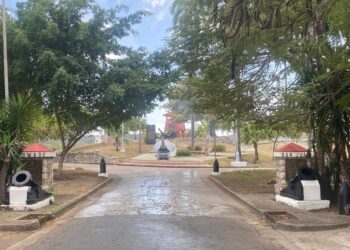In the mid-1980s, an economist not at all close to the classic Marxist approach to capitalism, Raúl Prébisch, stated: “After long observation of the facts and much reflection, I have become convinced that the failures of Latin American development lack a solution within the prevailing system. It must be changed.”
Such a sentence is contained in the prologue of his book Capitalismo periférico. Crisis y transformación (Peripheral Capitalism. Crisis and Change) originally published in 1981, after his article “Hacia una teoría de la transformación” (Towards a theory of change, 1980), a text that culminated a series published in the ECLAC Review in which he presented his ideas on Latin American peripheral capitalism — there are many and varied peripheries — and his criticism of the neoliberal model imposed on the region — there are also many and varied neoliberalisms — just as Latin America had suffered during the 1970s.
Later, ECLAC itself would feed those ideas of Prébisch, in March 1990, when it produced a text titled Changing production patterns with social equity: the prime task of Latin American and Caribbean development in the 1990s (1996), which at the same time was his proposal for an alternative model to the prevailing Latin American neoliberalism — with the sole exception of Cuba — became the almost obligatory reference for any alternative development effort to that neoliberalism, supported in several cases by military dictatorships of sad memory.
Cuba, in the 1990s, undertook a transformation effort that, due to its magnitude and depth, was only comparable to that begun in the early years of the 1960s. Once again the loss of the “external partner” — the USSR and the socialist camp — required rethinking in all its magnitude and depth not only what to do, but also how to do it.
I do not believe that there are too many discrepancies today in considering that, although the “external factor” was the trigger for that crisis, our economy was at the same time burdened with old structural flaws, typical of underdeveloped countries, from which it had not been able to get rid of, despite the effort to industrialize the country and the social mobility achieved thanks to the social policy practiced by the Revolution from day one.
That crisis, which continues to be this one, imposed the need for change. The reform begun in the 1990s has never been truly completed, despite having been successful in the sense of recovering the growth dynamic, promoting new sectors that meant important changes in the sectoral structure, and having achieved that service sectors were incorporated into this new economy as generators of export income. And all this was achieved with an increasingly aggressive blockade, increased by the Torricelli Act, the Helms-Burton Act, and the policies adopted by the Bush family administrations against Cuba; a policy of hostility that only lessened its pressure in the last term of the Obama administration.
Fidel Casto, when evaluating the functionality of the “Cuban model,” affirmed in the summer of 2010 in an interview with Jeffrey Golberg that “the Cuban model no longer works even for ourselves.” That phrase was used by almost all analysts according to their own conveniences and political preferences. The affirmation, from my perspective, did not at all mean renouncing the essence of the Revolution; but it did support the new transformative effort that President Raúl Castro was initiating.
To recognize that the model did not work was to recognize the need for transcendental changes, both in the economic structure and in the superstructure of the country. It was also the explicit support for the changes that Raúl advanced from his first speeches; more than necessary support due to the internal resistance that the new stage of the reform would face, and that surprises us every day by its ability to survive and its ability to mutate.
The search for this new functional model for the conditions of 21st century Cuba was a broad call, where many were included to work intensely on its construction and where the debate with the people was fundamental in the construction of a minimum consensus — that minimum common multiple — that every political and economic transformation requires.
From that theoretical effort and that debate two fundamental documents emerged, the Guidelines and the Conceptualization; the first, closer to an impressionist painting with relatively diffuse edges; and the second, closer to the Spanish portrait painters of the 19th century. Very close in time the National Development Plan and the Strategic Axes would also appear; they are all documents arising from collective work.
None was written by any god, none came to compete in immobility with the seven commandments; all were designed to facilitate a process guided by women and men, to serve the people, but not to be above them. They were all a product of the circumstances and needs of a given moment; circumstances and needs that have varied substantially from then to now.
However, that renewed reform, which also continues to be this one, did not achieve the essential changes that would allow the country to embark on a sustained path of growth, capable of eliminating those structural failures that since the beginning of the 20th century, and even before, have brought us up to this point, far from that productive transformation that we all recognize as more than necessary and tied to an external dependence increased quantitatively and qualitatively. External factors of undoubted weight, plus extreme caution and prejudices generated by resistance and resisters internally, are the fundamental reasons.
Radically transforming a country, even under normal conditions and with “help,” is, in itself, an extremely complex task, even if that country is under “normal” conditions. Doing so under the conditions in which Cuba finds itself today, as or more difficult than when the reform began in the 1990s, is extraordinarily more complicated.
Coherence is required between the general strategy and the essential vision and purposes; between public policies and strategy; among the instruments that come into play with those policies… Organization and consistency are essential, understood as the necessary coordination of decisive macroeconomic policies (fiscal, monetary, and exchange). In the Cuban reform experience, one of its aspects with the greatest weakness is precisely consistency, even from its first stage in the early 1990s, although it was undoubtedly better resolved then than now.
Sequentiality is also essential, repeatedly not considered much, even knowing that in economics and politics, the order of the factors does alter the product. All of this has cost several generations of Cubans time and life.
It is likely that we do not know what to do or how to do it. And it is not at all a sin of “lesa theory.” However, after thirty years of attempted reform, it is possible to list those errors that should not continue to be committed and of which the last month of 2023 and these first two months of 2024 give an indisputable example.
That statement of Fidel, so widely used at the time and sometimes so repeated with different intentions, allowed the limits of the reform to be expanded to where necessary. But, paradoxically, the very resistances that he intended to reduce have found a way to regenerate themselves and have brought us to the depth of the crisis that our country suffers today.
After forty-seven years as a university professor and four previous years as a student assistant (many of them dedicated to the issues of economic development and the Cuban economy), I am convinced that our model of economic and social development requires managing much better this objective process that philosophy knows as the negation of the negation.
It is necessary to move forward with more haste than caution while avoiding the generation of uncertainties that undermine confidence.










